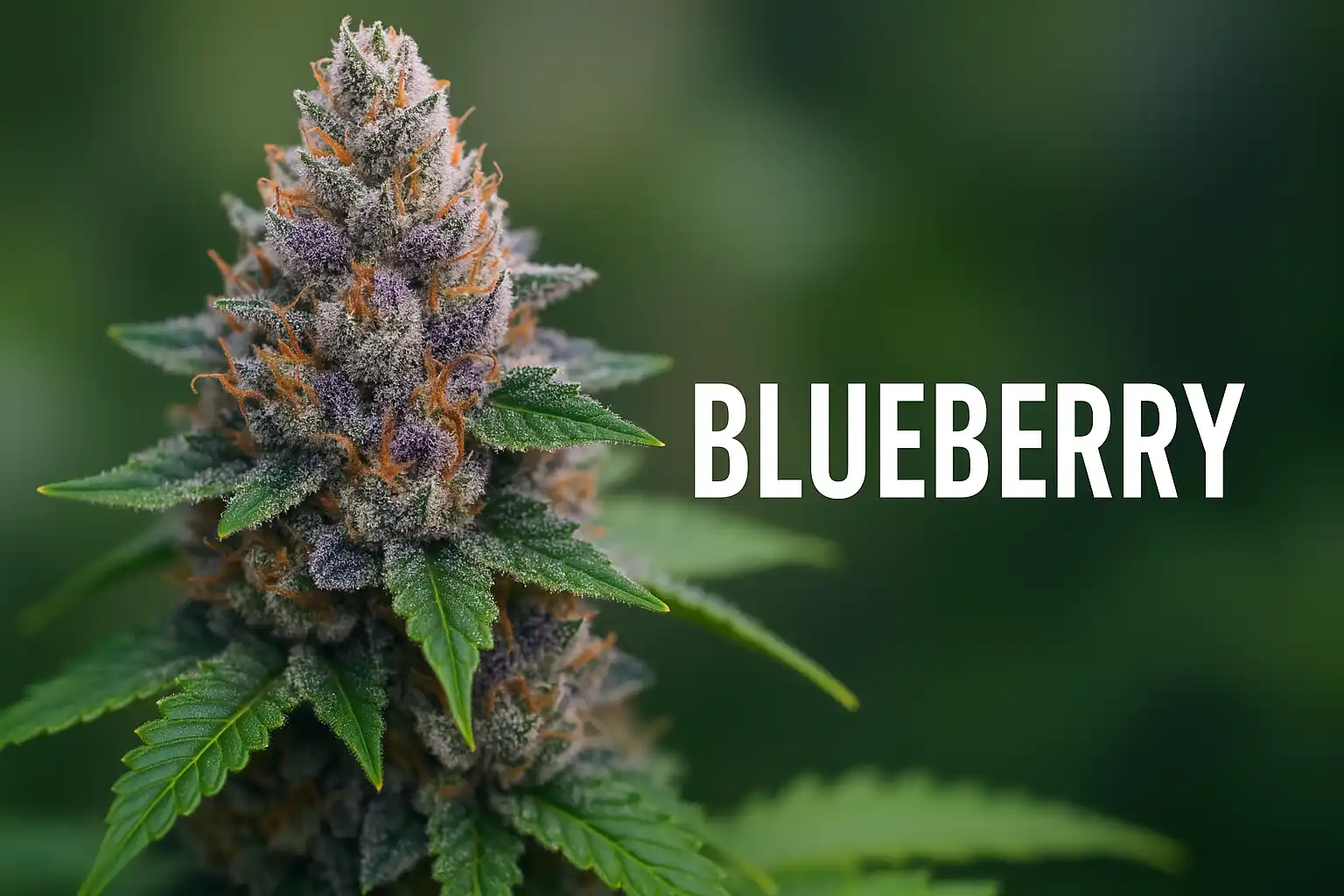How to Grow Blueberry Autoflower from Seed

Introduction: Why Blueberry Autoflower Is a Grower’s Favorite
Blueberry Autoflower is one of the most popular cannabis strains for both beginner and experienced growers. Its sweet berry flavor, compact size, and fast flowering time make it a top pick for indoor and outdoor grows. If you’re looking to grow Blueberry Autoflower from seed, this comprehensive guide will walk you through every stage—from germination to harvest.
Whether you’re using soil or hydro, organic nutrients or synthetics, this guide will help you maximize your yield and terpene profile. Let’s dive in.
Step 1: Choosing the Right Blueberry Autoflower Seeds
The first step in growing healthy plants is sourcing high-quality Blueberry Autoflower seeds. Choose reputable seed banks that offer genetics with strong traits like mold resistance, short flowering times, and high THC content.
Key Qualities to Look for:
- Feminized and autoflowering genetics
- High germination rate (95%+)
- Breeder reputation and customer reviews
- THC content: 16–24%
- Flowering time: 8–10 weeks
🧠 Pro Tip: Buy from trusted online cannabis seed banks that specialize in autoflowers. Look for Blueberry Autoflower seeds labeled as “easy to grow” or “ideal for beginners.”
Step 2: Germinating Blueberry Autoflower Seeds
Germination is a critical step. Proper technique here ensures a healthy start for your plant.
Popular Germination Methods:
- Paper Towel Method
- Place seeds between two moist paper towels.
- Keep them in a warm, dark area (70–75°F).
- Taproots usually emerge in 1–4 days.
- Starter Cubes (e.g., Rapid Rooter, Jiffy Pellets)
- Great for transferring into soil or hydro setups.
- Maintain high humidity for 3–5 days.
- Direct Planting
- Sow seed 0.5 inches deep in a moist, warm medium.
- Use a humidity dome for the best results.
Step 3: Best Soil and Containers for Blueberry Autoflower
Your soil setup will significantly influence plant health, root structure, and yield.
Ideal Soil Conditions:
- pH: 6.0–6.5
- Texture: Light and airy
- Rich in organic matter and beneficial microbes
Recommended Mix:
- 1/3 Coco Coir
- 1/3 Organic Compost
- 1/3 Perlite or Vermiculite
Add worm castings and mycorrhizae for root stimulation.
Container Size:
- Use 3–5 gallon fabric pots to allow proper air pruning and root development.
💡 Pro Tip: Autoflowers don’t like being transplanted. Germinate directly in the final pot if possible.
Step 4: Light Schedule and Setup for Autoflowering Blueberry
Unlike photoperiod strains, Blueberry Autoflower doesn’t require light cycle changes to flower. That makes it beginner-friendly.
Indoor Lighting Recommendations:
- Use Full-Spectrum LED Grow Lights (e.g., 300–600W)
- Keep lights 18–24 inches above canopy
Light Schedules:
- 20/4 Light Cycle – More aggressive vegetative growth
- 24/0 Light Cycle – Maximum light exposure but may stress plants
Outdoor Grow:
Plant in early spring or late summer depending on your zone. Autoflowers don’t rely on daylight hours, but sunlight still influences potency and yield.
Step 5: Nutrients and Feeding Guide
Blueberry Autoflower feeding schedule should be gentle but consistent. Autoflowers are sensitive to overfeeding.
Key Nutrient Phases:
- Seedling (Week 1–2):
- Use a root stimulator or light dose of kelp extract.
- Vegetative (Week 2–4):
- Nitrogen-rich formula (e.g., 4-2-3 NPK)
- Add calcium and magnesium supplements if using RO water
- Flowering (Week 4–10):
- Shift to phosphorus-heavy bloom nutrients (e.g., 1-4-5)
- Consider molasses or sugar-based boosters for terpenes
🧪 pH Range:
- Soil: 6.0–6.5
- Hydro/Coco: 5.8–6.2
🧠 Pro Tip: Use a PPM/EC meter to avoid nutrient burn. Flush plants in final 1–2 weeks with pure water.
Step 6: Blueberry Autoflower Growth Timeline (Seed to Harvest)
Here’s a typical lifecycle breakdown for Blueberry Autoflower:
| Week | Stage | What to Expect |
|---|---|---|
| 1 | Germination | Taproot and sprouting |
| 2–3 | Seedling | First true leaves; low feeding |
| 4–5 | Vegetative | Rapid leaf growth; stretch begins |
| 6–10 | Flowering | Bud development and trichomes |
| 11 | Flush and Harvest | Milky/amber trichomes indicate ripeness |
Average Time from Seed to Harvest: 8–10 weeks
Step 7: Training Techniques for Bigger Yields
Although autoflowers don’t respond well to high-stress training (HST), you can still boost yield with Low-Stress Training (LST).
Best Techniques:
- Bending Main Stem: In week 3–4, gently bend the main stalk sideways to allow lower bud sites more light.
- Tie-Down Method: Use soft garden ties to spread out branches.
- Defoliation: Remove a few fan leaves in week 4–5 to increase airflow.
🚫 Avoid topping or super-cropping unless you’re very experienced. Blueberry Autoflower has a limited veg time.
Step 8: Harvesting Blueberry Autoflower the Right Way
Harvest timing affects both potency and flavor. Don’t harvest too early.
Signs of Readiness:
- 70–90% pistils are amber or red
- Trichomes are mostly cloudy with some amber
- Aroma is at peak sweetness and pungency
Use a jeweler’s loupe or digital microscope to inspect trichomes.
Harvest Tips:
- Cut during early morning or just before lights go on
- Hang plants whole or trim and dry individual branches
- Maintain drying temps at 60–65°F and RH at 50–60%
Step 9: Curing for Flavor and Smooth Smoke
After drying, curing improves flavor, terpene profile, and potency.
Cure Steps:
- Place buds in airtight mason jars.
- Store in a dark, cool space (60–65°F).
- Open jars (burp) for 10–15 minutes daily for 2 weeks.
- Optional: Add humidity packs (62% RH)
Minimum curing time: 2 weeks
Ideal curing time: 4–6 weeks
Troubleshooting Common Blueberry Autoflower Issues
| Problem | Cause | Solution |
|---|---|---|
| Yellowing Leaves | Nutrient imbalance, overwatering | Adjust pH, feed lightly, improve drainage |
| Bud Rot | High humidity, poor airflow | Improve ventilation, remove affected buds |
| Stunted Growth | Rootbound or light stress | Use bigger pots, adjust light distance |
Conclusion: Your Blueberry Autoflower Success Story Starts Now
Growing Blueberry Autoflower from seed is a rewarding experience packed with aromatic flavor, relaxing effects, and vibrant colors. Whether you’re a first-timer or a seasoned cultivator, this strain offers rapid results and generous yields with minimal effort.
Remember, every great grow begins with quality genetics, the right environment, and a little patience.
Happy growing! 🌱💙
✅ Next Steps:
- Bookmark this guide
- Buy Blueberry Autoflower seeds from a reputable source
- Follow each step from germination to cure
- Join a grower’s forum or online community

